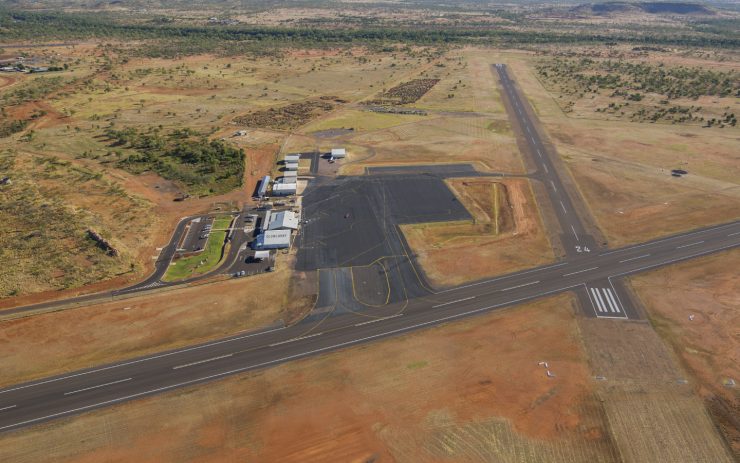Boeing has tested its latest autonomy technology at Australia’s first commercial drone flight testing facility at Cloncurry Airport. A AUD14.5 million investment from the Palaszczuk Government has delivered design, construction and support for the foundation stage of the drone test facility at Cloncurry Airport.
Global defence technology company QinetiQ was appointed to design and construct the facility, establish the flight test range and manage this foundation stage of the drone testing facility.
QinetiQ Australia Managing Director Greg Barsby said the flight test range will support all weight classes of UAS for routine flying operations, demonstration activities and test and evaluation trials.
“It will be a critical component in the overall drone ecosystem, as an enabler and connector of high-technology UAS programs and initiatives,” Mr Barsby said.
According to a statement released by the Queensland Government, Deputy Premier and Minister for State Development, Infrastructure, Local Government and Planning Steven Miles said establishing the Queensland Flight Test Range was a key part of government’s strategy to support a diverse economy and bring high-technology industry and more jobs to the region.
“Australia’s first commercial drone flight testing centre is officially open for business at Cloncurry Airport,” Mr Miles said. “The construction phase of this state-of-the-art testing facility for unmanned aerial systems (UAS) supported more than 100 direct jobs in the region including five new apprenticeships. The facility is the largest of its kind in the southern hemisphere and includes a hangar, buildings for office space and monitoring equipment, range control systems, a surveillance radar and amenities.
“The centre has now hosted its first test flights, by aerospace giant Boeing. Boeing Australia tested their advanced autonomy project including brain-on-board technology over 10 days in Cloncurry, flying up to five high performance test aircraft in a team for the first time.
According to a Boeing press release, Boeing’s advanced autonomy technology, including on-board command and control and data sharing capabilities, were tested using five 3.4-meter (11-foot) aircraft. “The tests demonstrated our success in applying artificial intelligence algorithms to ‘teach’ the aircraft’s brain to understand what is required of it,” said Emily Hughes, director of Phantom Works International. “The data link capabilities enabled the aircraft to communicate with the other platforms so that they could collaborate to achieve a mission.”
Testing lasted 10 days, with aircraft incrementally added until the five operated together. During testing, the aircraft reached speeds of 270 kilometers (167 miles) per hour.
“With the size, number and speed of aircraft used in the test, this is a very significant step for Boeing and industry in the progress of autonomous mission systems technology,” Hughes said.
The activity was the final milestone delivered in partnership with the Queensland government as part of Boeing’s Advanced Queensland Autonomous Systems Platform Technology Project. During the project, Boeing has worked with over 90 personnel from a number of small-to-medium enterprises including RFDesigns, Amber Technology Ltd., Premier Box, McDermott Aviation and Five Rings Aerospace.
Technology and capabilities proven under this program will form part of the Boeing Airpower Teaming System and future Boeing autonomous platforms.
The Queensland Flight Test Range is now open for business for commercial users from around the globe. Read more about the facility here.
For more information visit
https://statements.qld.gov.au/statements/91088
www.boeing.com




